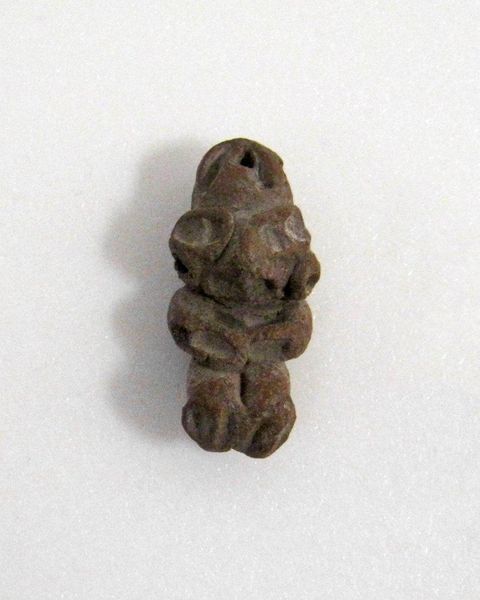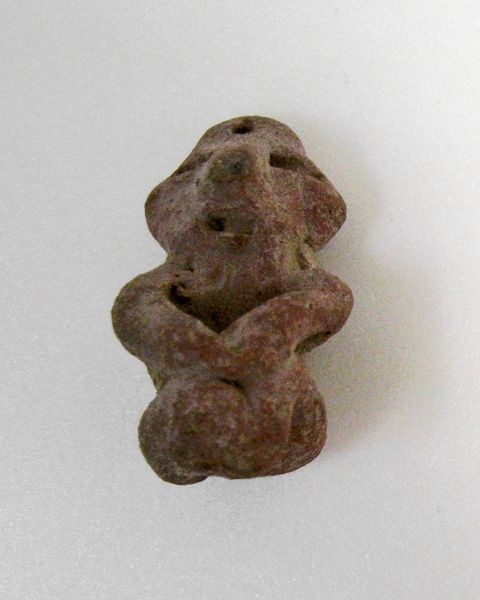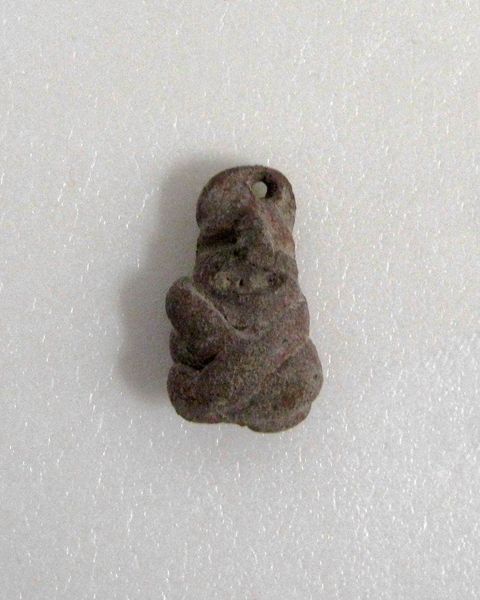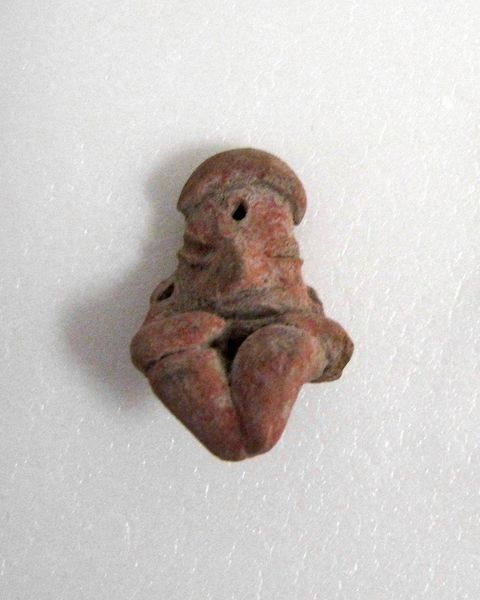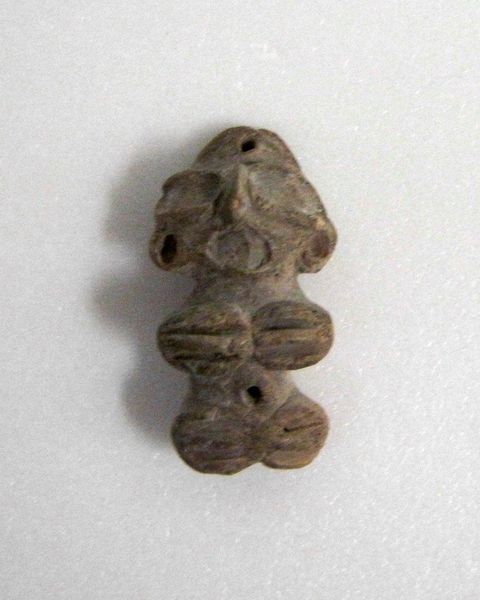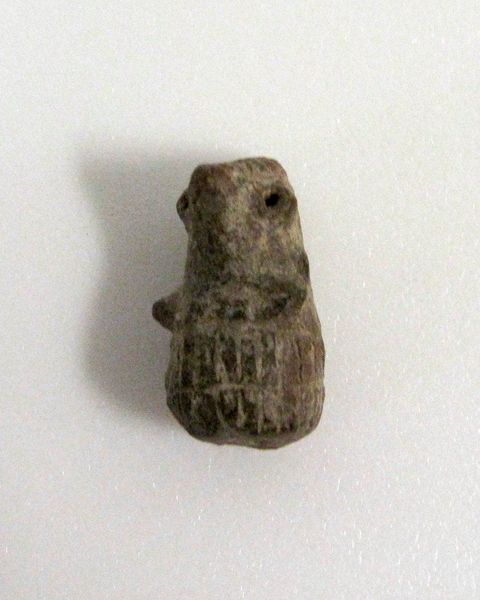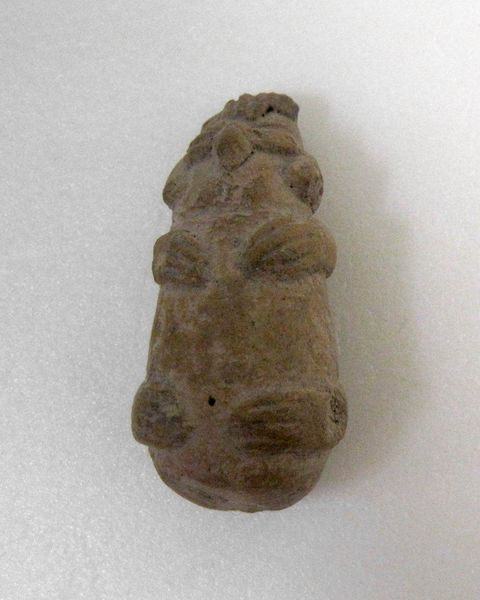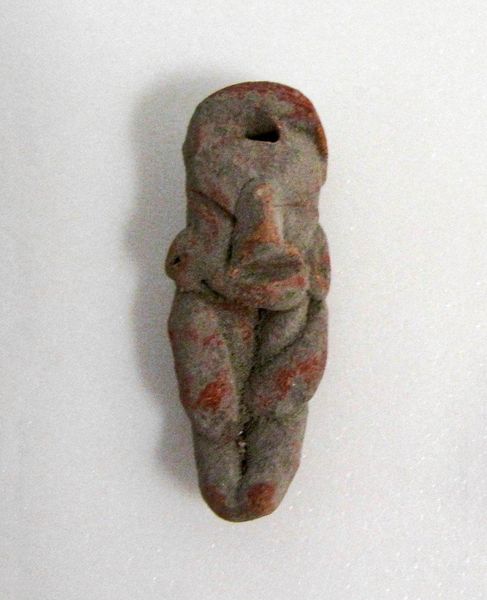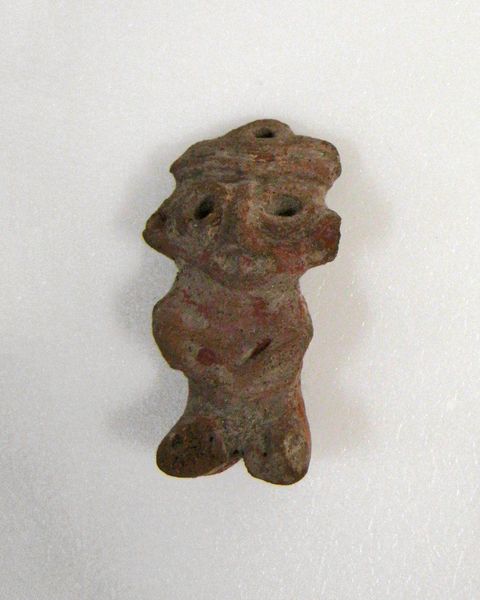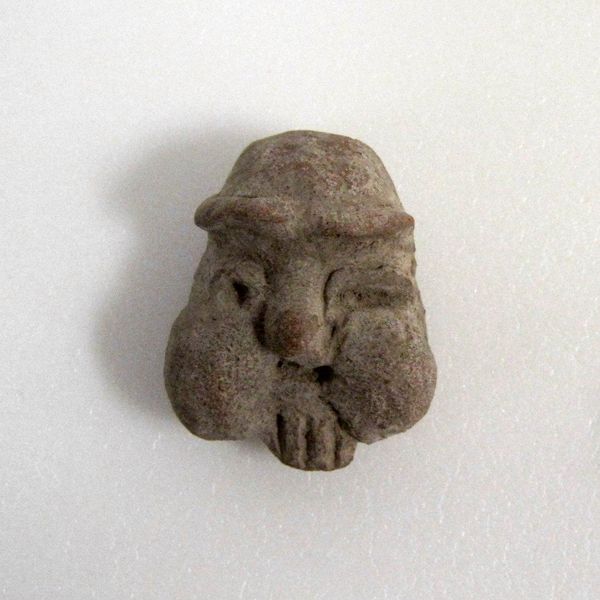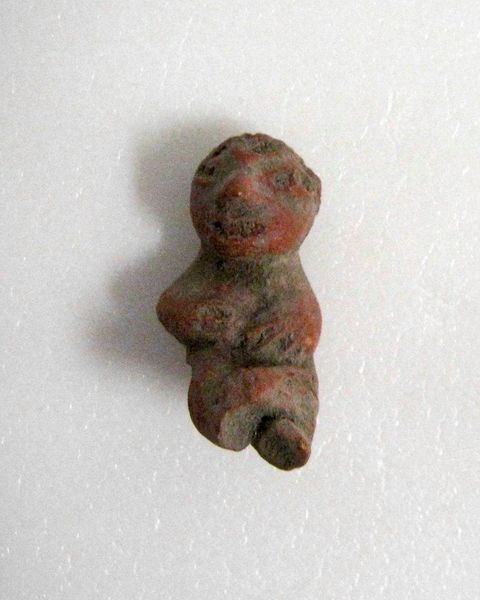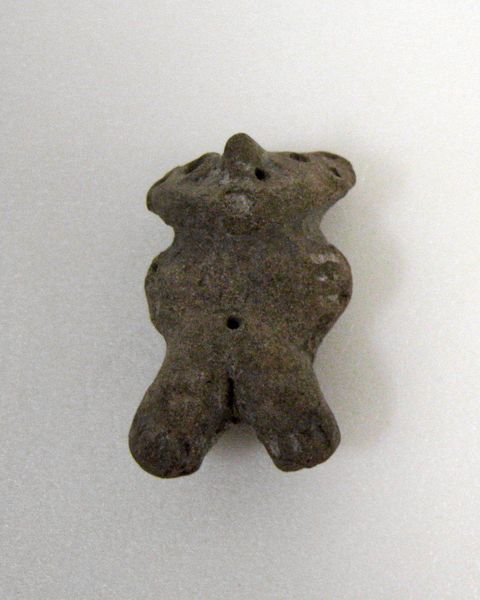
ceramic, earthenware, sculpture
#
fluid shape
#
3d sculpting
#
natural shape and form
#
sculpture
#
ceramic
#
jewelry design
#
sculptural image
#
figuration
#
pectoral
#
earthenware
#
sculpting
#
sculpture
#
mid-section and head portrait
#
statue
Copyright: Public Domain
Curator: Welcome. Before us, we have a fascinating Tlatilco miniature figurine, crafted around 1500. This striking sculpture, residing here at the Minneapolis Institute of Art, is made of earthenware. Editor: Immediately, I am struck by the material. You know, its humble terracotta-like appearance gives it a very earthly, grounded feeling. Almost like handling ancient wisdom worn smooth by time. Curator: Precisely. Its modest composition provides such raw information. What’s compelling about Tlatilco figures is what they tell us about Prehistoric Mesoamerican societies, especially their concerns with fertility and the dualities of existence. We see how powerful feminine representation was for the maintenance of the culture. Editor: Right. It serves as this compelling narrative of indigenous resistance against colonial dominance. What looks like simple "figurine" speaks volumes about Tlatilco beliefs and ways of living, specifically about the importance of women, and how those belief systems were undermined over time. Its very existence here in the museum is evidence of coloniality. I feel an urgent sense of advocating for these narratives in reconstructing and critiquing established Western epistemologies about pre-colonial societies. Curator: It's hard not to see it that way, really. Consider how it was created with only available materials like ceramic, molded to depict something that held strong socio-cultural currency. Editor: Also the size is quite powerful too. It prompts questions about intimate relationships between the user and the object, its utility, how its purpose shapes its narrative... Who crafted it? Whose neck did it dangle from? Curator: Well, objects such as these are important to consider, offering insights into the traditions of Tlatilco culture. There’s much debate on what the sculpture actually meant but it speaks to how central cultural creation was to the community. Editor: I see this figurine as a conversation piece. Art's power lies not only in its intrinsic form, but its capacity to ignite dialogue. Curator: Indeed, it truly brings to the fore our responsibilities to indigenous legacies and histories. Editor: Absolutely. To confront the ingrained power structures that obscure diverse voices from art.
Comments
No comments
Be the first to comment and join the conversation on the ultimate creative platform.
